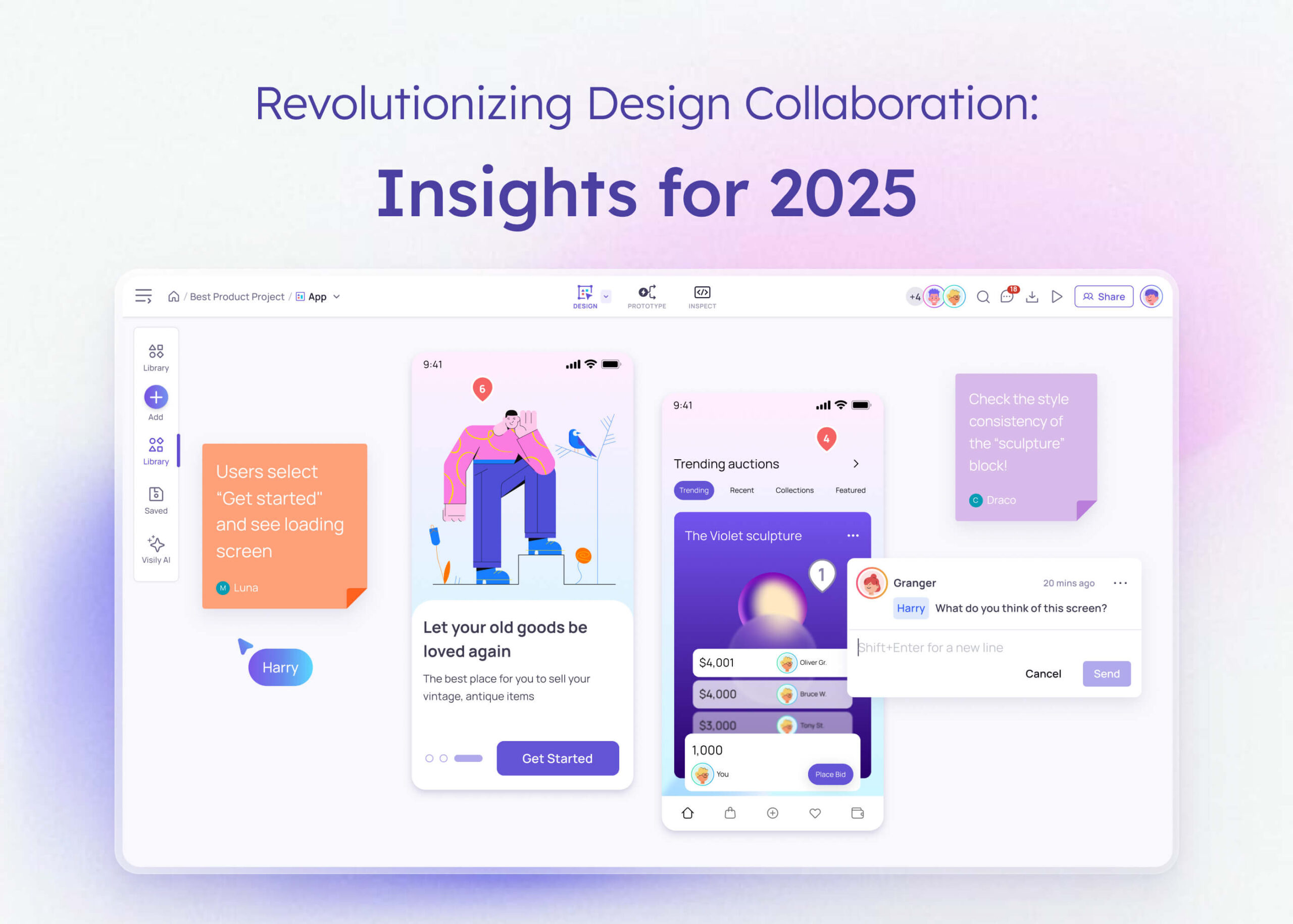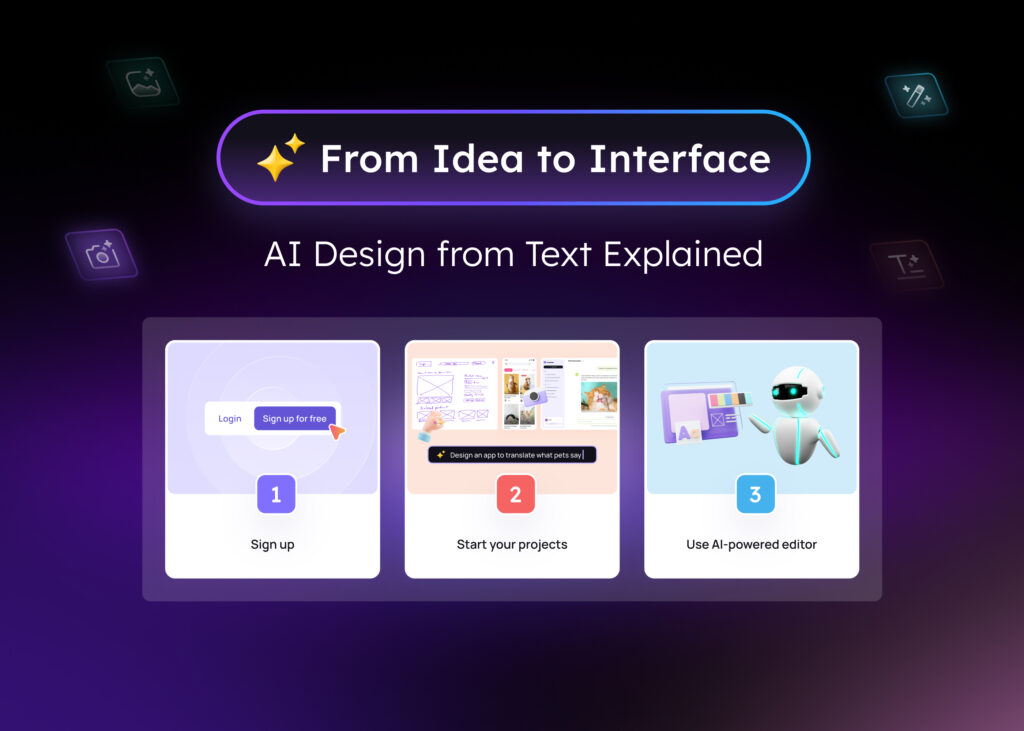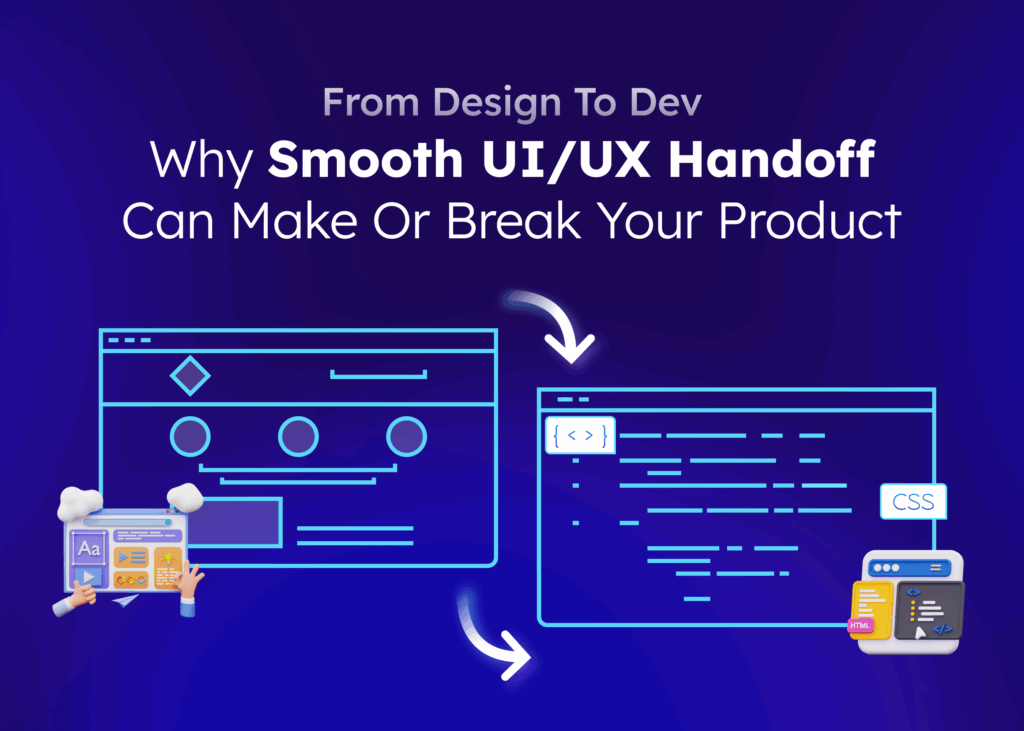Introduction
The landscape of design collaboration is changing faster than you can say “brainstorm.” As we gear up for 2025, the topic of design collaboration in the future is not just a buzzword—it’s a necessity.
Teams are now craving tools that don’t just facilitate communication but also inspire creativity and streamline workflows. With innovative technologies and fresh trends on the horizon, the way product managers, designers, developers, and stakeholders work together is set to undergo a monumental transformation. Let’s take a closer look at the trends in collaboration that will shape our design practices in the years to come.
The current state of design collaboration

Gone are the days when a design project meant endless email chains and fragmented discussions. Today’s design collaboration tools have evolved into robust platforms that allow for real-time communication and seamless integration. Visily, for example, stands at the forefront of this evolution, making it easier than ever for teams to visualize ideas and collaborate from anywhere in the world.
However, challenges still lurk in the shadows. Miscommunication remains a common pitfall, often exacerbated by a lack of integration between various tools. Teams frequently find themselves juggling multiple platforms, which can lead to confusion and wasted time.
The demand for cohesive design software that unites all aspects of the design process is palpable. As we look ahead, the quest for innovative solutions that bring everyone together under one virtual roof will intensify.
Key trends in design collaboration
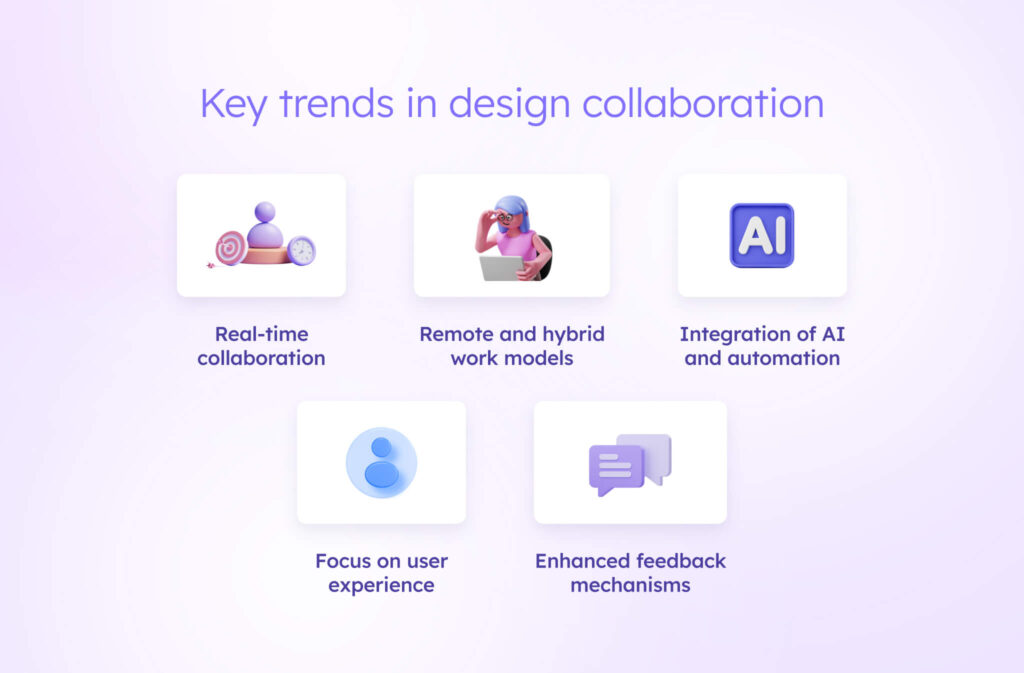
1. Real-time collaboration
Imagine a design session where team members can sketch, comment, and iterate simultaneously—sounds like a dream, right? That dream is becoming a reality as real-time collaboration tools gain traction. With platforms like Visily’s real-time collaboration features, everyone can contribute their ideas in real time, creating a dynamic environment that fosters creativity and innovation. The shift towards more interactive collaboration will allow teams to work more efficiently and produce better results.
2. Remote and hybrid work models
As remote work becomes the new normal, design collaboration tools are adapting to support various work structures. Companies are increasingly embracing flexible work environments, making it essential for tools to cater to both in-office and remote collaboration seamlessly.
The future of design collaboration will likely see a blend of in-person and virtual teamwork, allowing for a diverse range of perspectives and ideas.
3. Integration of AI and automation
AI is not just a buzzword; it’s a powerful tool that promises to revolutionize design collaboration. Imagine having an AI assistant that automates mundane tasks, suggests design improvements, or even analyzes user behavior to offer insights.
The incorporation of AI into design tools, like Visily’s AI-powered design features, will free up valuable time for creative thinking and problem-solving. As we move toward 2025, we expect to see more AI-driven features that enhance the design process and improve overall efficiency.
4. Focus on user experience
User experience will take center stage in design collaboration. Tools that prioritize user-friendly interfaces will dominate the market. Designers will seek platforms that not only facilitate collaboration but also enhance the overall experience for all team members. After all, design is about creating meaningful experiences, and collaboration tools should reflect that philosophy.
5. Enhanced feedback mechanisms
Feedback is a critical component of any design process, and the future will see tools that streamline this crucial step. Instead of relying on lengthy email threads or confusing comment sections, teams will benefit from enhanced feedback mechanisms that allow for quick and efficient input. Tools that categorize feedback, prioritize key insights, and provide a clear overview of what needs to be addressed are on the horizon.
Predictive analysis for design collaboration
What does the future hold for design collaboration? Predictions indicate a significant shift toward user-friendly tools that prioritize accessibility. Design software predictions suggest that platforms will become more intuitive, allowing users of all skill levels to participate in the design process. The democratization of design will encourage diverse input and spark creativity across various disciplines.
As more people get involved in the design process, the need for effective project management and organization will grow. Tools that integrate project management features with design collaboration will become increasingly popular. Teams will be able to track progress, assign tasks, and ensure that everyone is on the same page, ultimately leading to more successful outcomes.
Another significant trend to watch is the rise of collaborative design communities. As remote work continues to thrive, designers will seek out platforms that allow them to connect with other professionals, share knowledge, and collaborate on projects. An increase in online design communities that facilitate networking and support collaboration across borders is on the horizon.
Impact of AI on design collaboration
AI will undoubtedly play a pivotal role in shaping the design collaboration future. By analyzing patterns in design projects and user interactions, AI can offer insights that enhance decision-making. Imagine a scenario where AI-driven features identify potential design flaws before they become issues, saving teams time and resources.
Moreover, AI-powered tools will streamline feedback processes. Instead of sifting through countless emails, teams can leverage AI to gather and categorize feedback efficiently, ensuring that critical insights don’t slip through the cracks. In the future, AI design tools will not only support designers but also empower teams to make informed decisions based on data-driven insights.
Real-life applications of design collaboration tools
Consider a scenario where a design team is working on a new app. With Visily’s collaborative features, team members can sketch ideas, provide feedback in real time, and make adjustments on the fly. The integration of AI-powered design tools in the product design process helps the team manage their time better while making informed changes based on user feedback, ensuring the app is both easy to use and visually appealing. The streamlined approach leads to faster project completion times and a more cohesive end product. Real-life applications of design collaboration tools will demonstrate their ability to enhance creativity, improve communication, and ultimately lead to better outcomes.
How to prepare for future tools?
As the design collaboration landscape continues to evolve, teams must be proactive in preparing for future tools. Here are some strategies to ensure that your team is ready for what lies ahead:
- Stay updated on emerging technologies: Keeping an eye on the latest trends and tools in design collaboration is crucial. Regularly exploring new platforms and features will help you understand how they can benefit your team.
- Foster a culture of open communication: Encouraging team members to share their thoughts and ideas openly is essential. A culture that values feedback will lead to more effective collaboration and innovation.
- Invest in training: Ensuring that all team members are comfortable using new tools by providing training and resources is vital. The more familiar everyone is with the technology, the smoother the collaboration process will be.
- Encourage experimentation: Don’t be afraid to try new tools and methods. Allowing team members to experiment with different approaches to collaboration and design fosters creativity and innovation.
The role of user experience in collaboration
As we look ahead, user experience will take center stage in design collaboration. Tools that prioritize user-friendly interfaces will dominate the market. Designers will seek platforms that not only facilitate collaboration but also enhance the overall experience for all team members. After all, design is about creating meaningful experiences, and collaboration tools should reflect that philosophy.
Visily: Your partner in design collaboration
Visily is at the forefront of the design collaboration revolution. With its intuitive interface, real-time collaboration features, and AI-powered tools, Visily empowers teams to create exceptional designs together. Whether you’re brainstorming ideas, creating wireframes, prototyping, or leveraging UI templates, Visily has you covered.
One of the standout features of Visily is its seamless integration with popular design tools like Figma. Teams can easily import their existing designs into Visily and start collaborating right away. The platform’s version control system ensures that everyone is always working on the most up-to-date files, eliminating confusion and duplication of effort.
Visily’s AI-powered design suggestions take collaboration to the next level. By analyzing design patterns, Visily can offer intelligent recommendations to improve the usability and aesthetics of your designs. These suggestions not only save time but also help teams create products that truly resonate with their target audience.
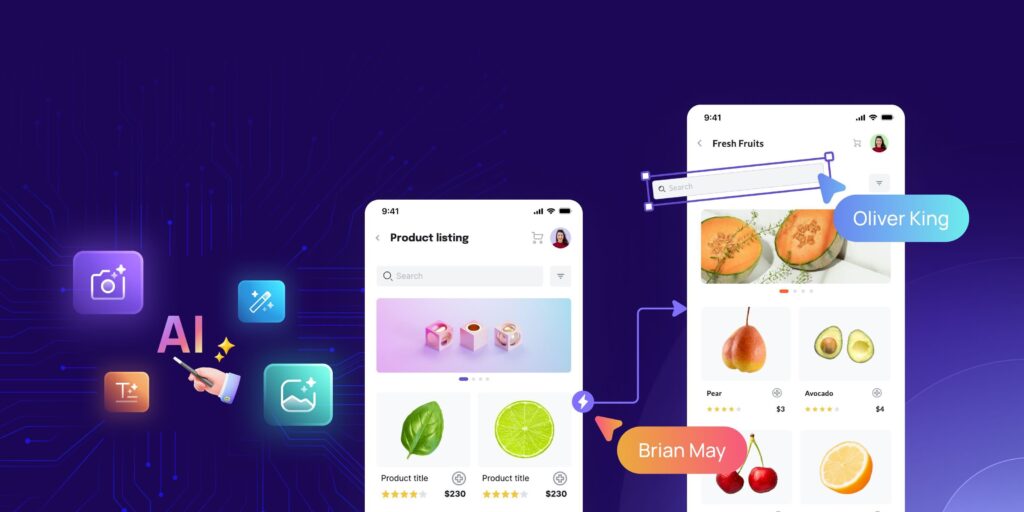
Ready to experience the future of design collaboration? Sign up for Visily today and embark on a journey of seamless collaboration, enhanced creativity, and unparalleled efficiency. With Visily by your side, your team will be well-equipped to tackle any design challenge that comes your way.
Conclusion
The future of design collaboration is bright, filled with opportunities for innovation and creativity. As we move toward 2025, expect to see trends that enhance real-time collaboration, integrate AI, and prioritize user experience.
With tools like Visily leading the charge, the design process will become more inclusive and efficient, allowing teams to create exceptional products that resonate with users. Embracing change, staying curious, and getting ready for a collaborative design journey like no other is the way forward!
Navigating design collaboration tools: key questions & insights
What are the upcoming trends in design collaboration tools?
Real-time collaboration, AI integration, and user-friendly interfaces are set to dominate the landscape in the coming years.
How can teams prepare for future design collaboration tools?
Teams can prepare for future design collaboration tools by:
- Staying updated on emerging technologies and trends
- Fostering a culture of open communication and feedback
- Investing in training to ensure team members are comfortable with new tools
- Encouraging experimentation with different approaches to collaboration and design
What sets Visily apart from other design collaboration platforms?
Visily offers an intuitive interface, real-time collaboration features, AI-powered design suggestions, and seamless integration with popular design tools like Figma.
How can AI enhance the design collaboration process?
AI can streamline feedback processes, offer intelligent design suggestions based on user data and patterns, and automate repetitive tasks, making collaboration more efficient and effective.
What impact will remote work have on design collaboration?
Remote work will drive the need for flexible, integrated tools that support both in-office and remote collaboration, making teamwork more effective than ever.




